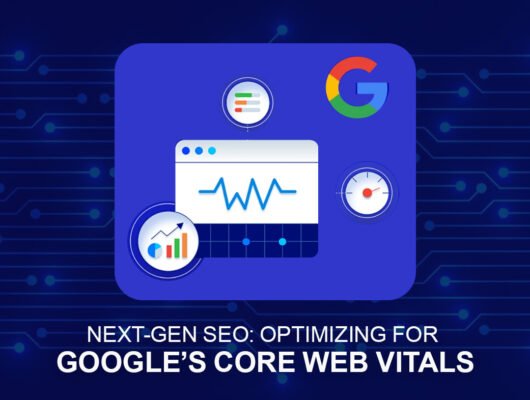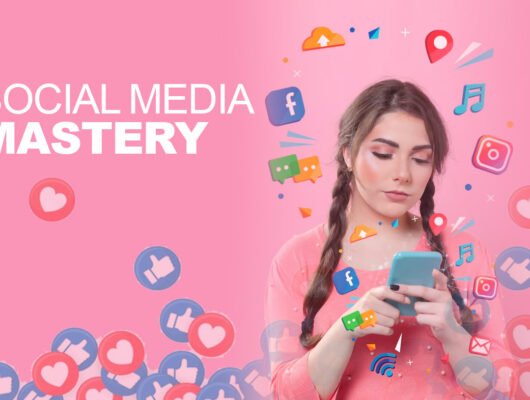Understanding Content Marketing
Content marketing is a strategic approach focused on creating and distributing valuable, relevant, and consistent content to attract and retain a clearly defined audience. Unlike traditional marketing that aims for immediate sales, content marketing cultivates a relationship with the audience by providing insights, education, and entertainment over time. This evolving discipline has immense importance in today’s digital landscape, primarily driven by increasing consumer expectations for authentic and helpful interactions with brands.
The significance of content marketing is underscored by the changing dynamics of how consumers search for and consume information. The proliferation of digital platforms has led to a shift where consumers rely more on content to make informed purchase decisions. Thus, businesses that leverage content marketing effectively can engage their target audience better, foster brand loyalty, and ultimately drive conversions.
Historically, content marketing has transformed significantly from its early days of simple articles and newsletters to more complex, multimedia-driven strategies that include blogs, videos, podcasts, and social media content. Each of these formats serves as a channel for businesses to communicate their values, educate their consumers, and showcase their products or services in a manner that resonates with their audience. Consequently, adopting an effective content marketing strategy has become not just an option, but a necessity for businesses aiming to thrive in a competitive landscape.
Essential concepts in content marketing include audience segmentation, content creation, distribution channels, and performance measurement. Understanding these elements is crucial for developing a tailored content marketing strategy that not only aligns with business objectives but also effectively addresses the preferences and needs of the target demographic. As we look ahead, the ability to adapt content marketing strategies to meet the evolving landscape will be vital for success in 2023 and beyond.
Identifying Your Target Audience
Understanding your target audience is a fundamental aspect of any effective content marketing strategy. It not only helps tailor your content to meet their needs but also ensures that your marketing efforts yield the desired results. To achieve this, several methods can be employed to conduct comprehensive audience research. These methods typically encompass analyzing demographics, psychographics, and behavioral patterns.
Demographic analysis involves assessing basic characteristics such as age, gender, income, education level, and geographic location. This information provides a broad outline of who your potential customers are, helping to identify the segments that may be most receptive to your content. However, demographic data alone does not paint a complete picture.
Psychographics delve deeper into the audience’s mindset, exploring their interests, values, attitudes, and lifestyles. This deeper understanding facilitates the crafting of content that resonates with the audience on a more personal level. Engaging with your audience through surveys or interviews can be instrumental in gathering this information. Furthermore, behavioral analysis provides insights into how your audience interacts with similar content, identifying patterns in engagement and purchase behavior. Knowing what content formats they prefer can help in optimizing your content delivery.
Creating buyer personas is a crucial methodology derived from this audience research. A buyer persona is a semi-fictional representation of your ideal customer, constructed using both qualitative and quantitative data. These personas guide your content strategy by clarifying the type of information your audience seeks, their challenges, and how your offerings can solve their problems. By consistently aligning your content with the needs of your buyer personas, you can enhance engagement and drive higher conversion rates.
Crafting Quality Content
Creating high-quality content is fundamental to an effective content marketing strategy in 2023. The diverse array of content types available—ranging from traditional blogs and dynamic videos to visually engaging infographics—offers marketers numerous avenues to connect with their target audiences. Each format serves a distinct purpose and should be selected based on the specific needs and preferences of the intended audience.
One essential principle in crafting compelling content is the use of storytelling techniques. Stories engage readers emotionally, making the material more relatable and memorable. A well-crafted narrative can build a connection between the brand and the audience, increasing the likelihood of engagement and sharing. Utilizing personal anecdotes, case studies, or customer testimonials within your stories can further enhance relatability and trustworthiness.
Additionally, maintaining a consistent brand voice is crucial when developing high-quality content. This voice should reflect the brand’s values and resonate with the target audience. Consistency in tone, style, and messaging across various content types fosters brand recognition and builds credibility. Whether the brand adopts a formal, friendly, or adventurous tone, coherence will strengthen the overall content marketing strategy.
Moreover, SEO (Search Engine Optimization) plays a vital role in ensuring that quality content reaches its intended audience. Employing effective SEO strategies enhances visibility on search engines, boosting the chances of attracting organic traffic. This involves keyword research, on-page optimization, and creating valuable content that addresses users’ search intent. Integrating keywords naturally throughout the content is important, as this practice ensures readability while maximizing exposure.
In summary, high-quality content crafted through storytelling, a consistent brand voice, and solid SEO practices forms the bedrock of an effective content marketing strategy in 2023. By focusing on these principles, marketers can create content that not only captures attention but also drives meaningful interactions with their audience.
Content Distribution Channels
In the realm of content marketing, the selection of appropriate distribution channels is crucial for maximizing reach and engagement. Various platforms serve specific purposes, allowing brands to effectively connect with their audience. Social media, email marketing, and websites are among the most commonly utilized channels, each possessing unique strengths and weaknesses.
Social media platforms like Facebook, Twitter, and Instagram provide significant advantages in terms of immediate reach and interactivity. They foster a sense of community, allowing for real-time engagement with audiences. However, the ever-changing algorithms can impede the organic visibility of content. Thus, maintaining an updated content strategy is essential to navigate these fluctuations while enhancing audience connection.
Email marketing remains a powerful tool for direct communication. With the ability to send personalized content directly to potential customers, organizations can build a loyal following. However, its effectiveness often hinges on the quality of the email list and relevance of the content. Poorly targeted emails may lead to high unsubscribe rates and can damage the sender’s reputation. Therefore, segmenting the audience based on preferences and behaviors is critical for success in this channel.
Websites serve as the cornerstone of content marketing, providing a dedicated space for comprehensive information and resources. They allow brands to showcase their expertise through blogs, whitepapers, and other forms of content. Nevertheless, without proper search engine optimization (SEO) practices, even the most insightful content may go unnoticed by target audiences. Therefore, integrating effective SEO strategies will enhance visibility and attract organic traffic.
To choose the right distribution channels, one must consider the target audience and the content type. A diversified approach that combines social media, email marketing, and a strong web presence can yield the best results. Implementing effective promotion techniques, such as influencer partnerships and cross-channel synergies, further amplifies content reach.
Leveraging Social Media for Content Marketing
In the digital age, social media platforms have become essential tools for amplifying content reach and enhancing engagement. By integrating effective content marketing strategies with social media, brands can foster meaningful connections with their audience. To harness the full potential of social media, marketers must prioritize crafting engaging posts that resonate with their target demographic. This involves understanding the unique characteristics of each platform and tailoring content accordingly. For instance, visual platforms like Instagram and Pinterest may benefit from high-quality images and infographics, while Twitter may be more suitable for brief updates and strong calls-to-action.
Utilizing trending topics and popular hashtags can significantly enhance the visibility of content. By researching relevant hashtags, brands can extend their reach beyond their current followers, tapping into broader conversations and communities. Incorporating these hashtags into posts not only increases discoverability but also demonstrates a brand’s awareness of ongoing trends. Furthermore, creating compelling content that encourages sharing can lead to organic growth, amplifying the overall impact of the marketing strategy.
Community building is another critical aspect of leveraging social media for content marketing. Engaging directly with audiences through comments, messages, and live sessions fosters a sense of connection and loyalty. Brands that actively participate in discussions and respond to feedback cultivate a welcoming atmosphere that encourages user interaction. Regularly scheduled posts that encourage audience participation, such as polls or questions, can drive conversation and engagement, making the audience feel valued.
Several brands have successfully intertwined social media with their content marketing efforts. For example, the food company Chipotle uses social media to share user-generated content, effectively showcasing customer experiences and building community. By strategically leveraging social media, brands improve not only their content reach but also their overall relationship with consumers, leading to enhanced brand loyalty and conversion rates.
Engaging Content Formats and Innovations
As content marketing evolves, it is crucial to explore engaging content formats that go beyond traditional text-based articles. Live videos, podcasts, and interactive content are gaining significant traction, allowing brands to connect with their audiences in more dynamic ways. Live video streaming, for instance, provides real-time interaction, enabling brands to address viewer queries instantly, thereby enhancing customer engagement. This format has become increasingly popular on platforms such as Instagram Live and Facebook Live, where businesses can showcase products, host Q&A sessions, or provide behind-the-scenes insights.
Meanwhile, podcasts are emerging as a powerful medium for storytelling and information sharing. This audio format allows brands to delve into topics in depth, engage industry experts, and provide valuable content that listeners can consume on-the-go. The rising popularity of platforms like Spotify and Apple Podcasts underlines the potential for brands to reach wider audiences through compelling narrative-driven content that resonates with listeners’ interests.
Another innovative approach in content marketing involves the use of interactive content, such as quizzes, polls, and infographics. This type of content encourages active participation from the audience, creating a more memorable experience. By harnessing the power of interactive formats, brands can gather insights and feedback while also boosting engagement levels significantly.
Moreover, the integration of artificial intelligence (AI) and data analytics represents a transformative trend in the development of personalized content experiences. These technologies enable marketers to analyze audience behaviors, preferences, and demographics, which can inform more tailored content strategies. Brands can leverage AI to recommend personalized content or even automate certain content creation processes, thus enhancing the efficiency and relevance of their offerings.
In conclusion, embracing diverse content formats and leveraging technological innovations are essential for effective content marketing strategies in 2023. Brands that experiment with live videos, podcasts, and interactive experiences, while simultaneously utilizing AI and data analytics, are likely to see greater audience engagement and satisfaction.
Measuring Content Marketing Success
Measuring the success of content marketing strategies is crucial for understanding their effectiveness and making data-driven adjustments. Key performance indicators (KPIs) play a significant role in this evaluation process. They enable marketers to assess various aspects of their content, ensuring that it aligns with business objectives and audience expectations. Common KPIs to monitor include engagement metrics, conversion rates, and traffic sources.
Engagement metrics, such as likes, shares, comments, and time spent on page, provide insights into how the audience interacts with the content. Higher engagement levels typically indicate that the content resonates well with the target audience. Tools such as Google Analytics and social media analytics platforms can be employed to track these metrics efficiently. Additionally, monitoring bounce rate and scroll depth can help gauge how effectively content retains the audience’s attention.
Conversion rates are another vital aspect to evaluate. They measure the percentage of users who take desired actions after consuming content, such as signing up for newsletters, requesting a demo, or making a purchase. By connecting content performance to conversion goals, marketers can identify which pieces lead to higher lead generation or sales. Use techniques like A/B testing to optimize content formats and calls-to-action, ultimately enhancing conversion outcomes.
Moreover, audience interaction should not be overlooked. Analyzing comments and feedback offers valuable qualitative insights into audience sentiments and preferences. This analysis allows marketers to refine content strategies according to audience needs. Regularly reviewing the collected data and results enables marketers to identify patterns and trends, leading to informed strategy adjustments. Over time, this iterative process helps ensure that content marketing efforts yield the desired results and align with overarching business objectives.
Common Content Marketing Mistakes to Avoid
As businesses strive to enhance their content marketing strategies, it is essential to understand common pitfalls that can hinder success. One prevalent mistake is the lack of consistency in publishing content. This inconsistency can lead to diminished audience interest and eroded brand credibility. To mitigate this issue, businesses should establish a content calendar that outlines a strategic schedule for content creation and distribution. By adhering to a consistent posting schedule, brands can maintain audience engagement and foster loyalty.
Another common error lies in neglecting audience engagement. A successful content marketing strategy does not merely focus on content creation; it also includes active audience participation. Failing to interact with the audience can result in missed opportunities for feedback, which is crucial for refining content. Businesses should prioritize responding to comments, inviting discussions, and incorporating audience opinions into future content. By fostering a two-way communication channel, brands can enhance their relationships with their audience and improve content relevance.
Ignoring analytics is often an overlooked mistake in content marketing. Many businesses produce content without evaluating its performance, leading to wasted resources and ineffective strategies. Utilizing analytics tools can provide insights into audience behavior, preferences, and engagement metrics. By regularly analyzing this data, marketers can uncover valuable trends and adjust their strategies accordingly. It is vital to identify what content resonates with the audience and continuously refine content approaches to maximize effectiveness.
By avoiding these common content marketing mistakes—lack of consistency, neglecting audience engagement, and ignoring analytics—businesses can significantly enhance their marketing strategies. Implementing best practices such as creating a content calendar, engaging with the audience, and leveraging analytics will not only improve content effectiveness but also support long-term brand growth.
Future Trends in Content Marketing
The landscape of content marketing is consistently evolving, driven by changing consumer preferences and advancements in technology. As we look ahead to 2023 and beyond, several emerging trends are poised to significantly impact the way brands engage with their audiences. One of the most noteworthy trends is the continued rise of video content. As platforms like TikTok and YouTube gain traction, consumers are increasingly gravitating towards visual storytelling. Videos are not only engaging but can also convey complex messages in a concise format, making them an indispensable tool in effective marketing strategies.
Another critical trend is the importance of personalized experiences. Today’s consumers expect content that speaks directly to their interests and needs. Advanced data analytics allow marketers to collect and analyze consumer behavior, leading to hyper-targeted content strategies. This level of personalization fosters a more genuine connection between brands and their audience, enhancing customer loyalty and driving conversion rates. Companies that successfully leverage data to create customized marketing campaigns will be at a distinct advantage in the competitive landscape.
Additionally, the integration of technology in content creation and distribution is expected to accelerate. Tools such as artificial intelligence (AI) and machine learning are set to reshape the content marketing paradigm. These technologies not only automate various aspects of content generation but also enhance decision-making processes by providing insights into consumer preferences. Voice search and chatbots are also gaining prominence, enabling a more interactive and engaging way to reach target audiences.
In summary, understanding and adapting to these trends will be crucial for marketers seeking to stay relevant in an ever-changing environment. By embracing video content, personalizing experiences, and utilizing technological advancements, brands can create effective content marketing strategies that resonate with their audience in 2023 and the years to come.







